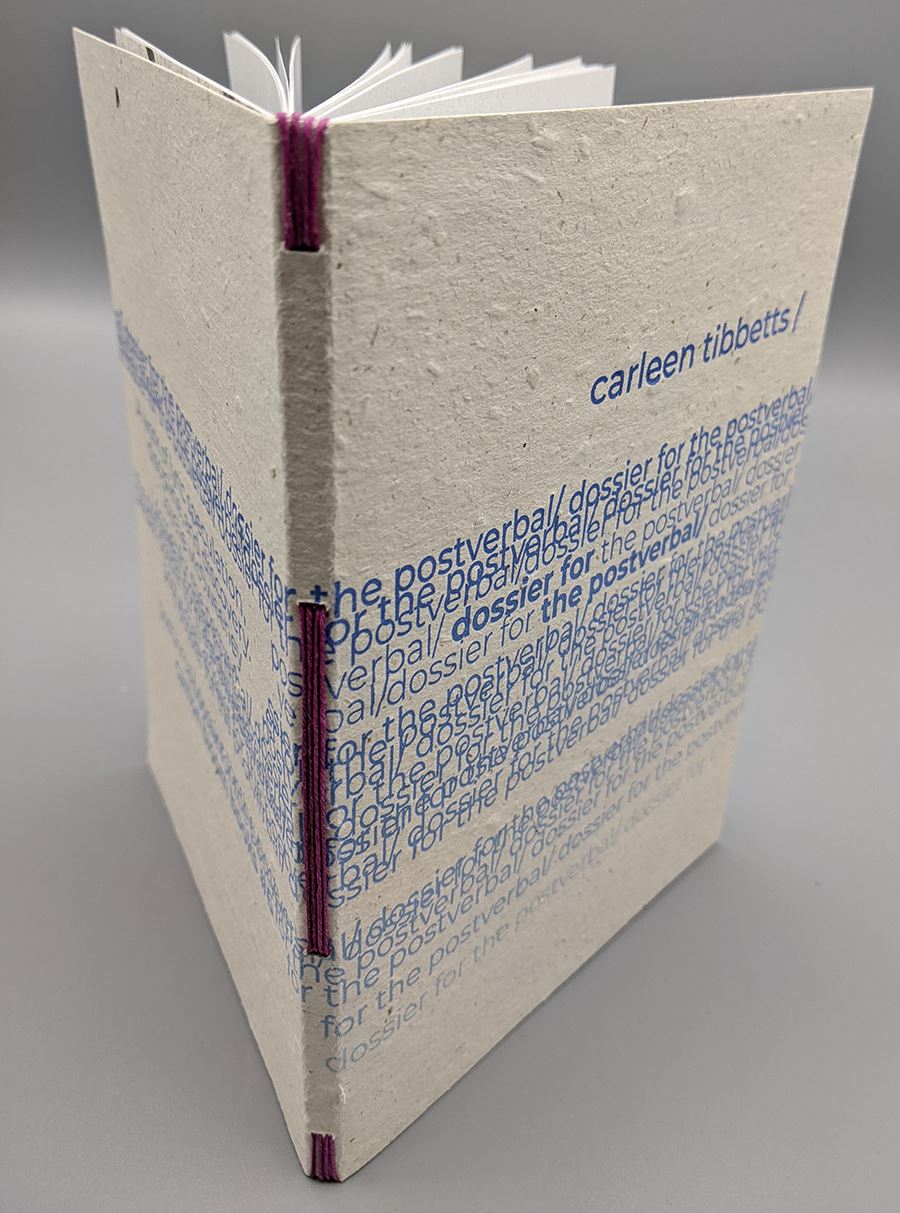
In The Century of Artist’s Books, Johanna Drucker describes a mode of self-reflexivity specific to the artist’s book as an auratic quality which returns the reader’s attention to the physical form of the book object. Where readers might usually enter a mental state in which the object disappears and the text exists purely as its meaningful information, an attention to the construction in this way creates an energizing space in which the material and the imaginal are not opposed to each other and, in fact, vibrate, spark, bounce off, and connect in multiplying, generative, and surprising ways. In considering the concept of an editor’s/maker’s intent, I find it more direct to think about my own approaches in crafting such an object.
In founding the small press Carrion Bloom Books in 2019, my partner Jace Brittain and I wanted to publish innovative writing which could burst from its codex container and realize the kind of energizing qualities Drucker describes. We were aware of some remarkable writing (and had a sense that there must be much more) that wasn’t being published, and we thought that the form of artist’s books might help such works take a shape which would realize the thorny, grotesque, sparking potentials that made those texts innovative and challenging in the first place. Beyond showing or containing a text, we wanted to find forms which could shape and be shaped by their content.


Our edition of Hannah V. Warren’s Southern Gothic Corpse Machine, like many of our publications so far uses an exposed longstitch binding. Warren’s chapbook is constructed of three signatures of 16 pages (4 folded sheets) each. Three signatures being slender for the longstitch, a form whose visible threads already seem to provoke a desire for carefulness and preservation, there is a preciousness to these objects which is productively challenged by Warren’s perverse and visionary poetry. During its production, I made decisions about the makeup of a book already tuned in its text toward filamentous algae, roadkilled armadillos, and moldering monstrosity. Choices about paper, thread, and design which echoed and answered the book’s radical qualities: collisions of disintegration, vibrancy, vitality, atrophy, preciousness and perversion. A reader, approaching the form with apparently fragile intent, in this case is turning the first pages of Warren’s text in exactly the right mood.
During the production of each of the books Carrion Bloom has published, we’ve committed to adding at least one physical element which is totally new to us as bookmakers. With leia penina wilson’s call the necromancer, we experimented with allowing the lead type to leave a deep impression which we later rubbed with white charcoal. The result evokes something spectacular, confounding, and elusive in wilson’s work, an unstable sigil and not-quite frottage which rubs off a little on its reader. Our chalky fingerprints appear literally on many of those covers, and these marks appeal to us as visible evidence of an object which felt closely collaborative. And, the visibility of this process models formal self-reflexivity.

In the case of our newest book, dossier for the postverbal/ by Carleen Tibbetts, we used a fading split fountain print on the cover in an attempt to capture some aspect of Tibbetts’ cosmic grappling with concepts of ephemeral data and deceptive language. Tibbetts’ poem describes “a darkable network ruined in such intervals,” spaces where language won’t cohere in symbol and images disintegrate, and we thought that such transcendent and extravagant writing deserved a form that might offer continuing collaborative engagement with those ideas.
I believe that readers respond deeply and meaningfully to such engagement. And there are many projects forthcoming from a diversity of exciting presses that advance new ways to read across translation, challenge conceptions of the page, and give complex attention to structural form. I continue to feel profoundly emboldened and energized by the books and projects being produced by Ugly Duckling Presse, Inside the Castle, Cloak.wtf, and so many more. These ecstatic book objects range widely from pamphlets to perfect bound volumes to digital artifacts, and it’s truly inspiring to be working and creating as a part of this community.
Rachel Zavecz is a book artist and writer living in Salt Lake City. She co-edits the small press Carrion Bloom Books with fellow writer Jace Brittain. She received her MFA in Poetry from the University of Notre Dame, and is a PhD candidate in Fiction at the University of Utah.
Post moderated by Emily Tipps.

